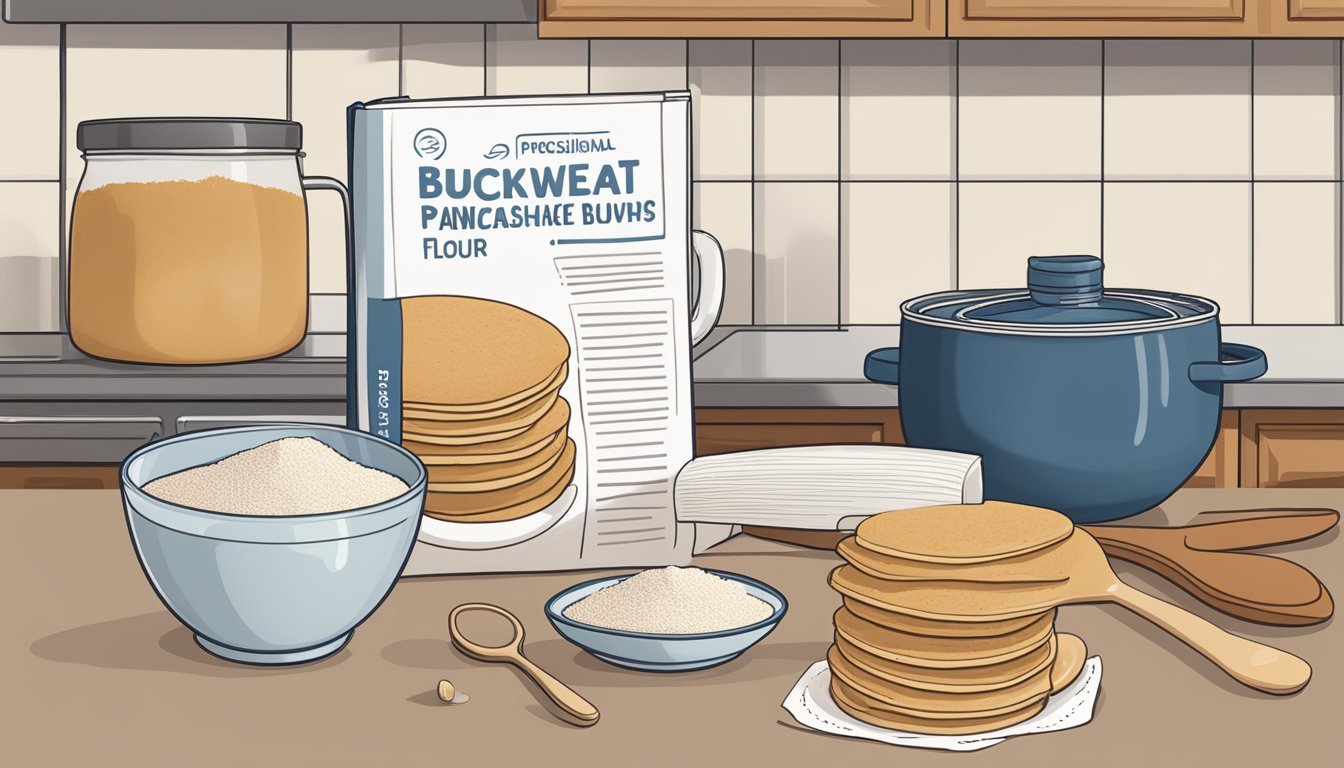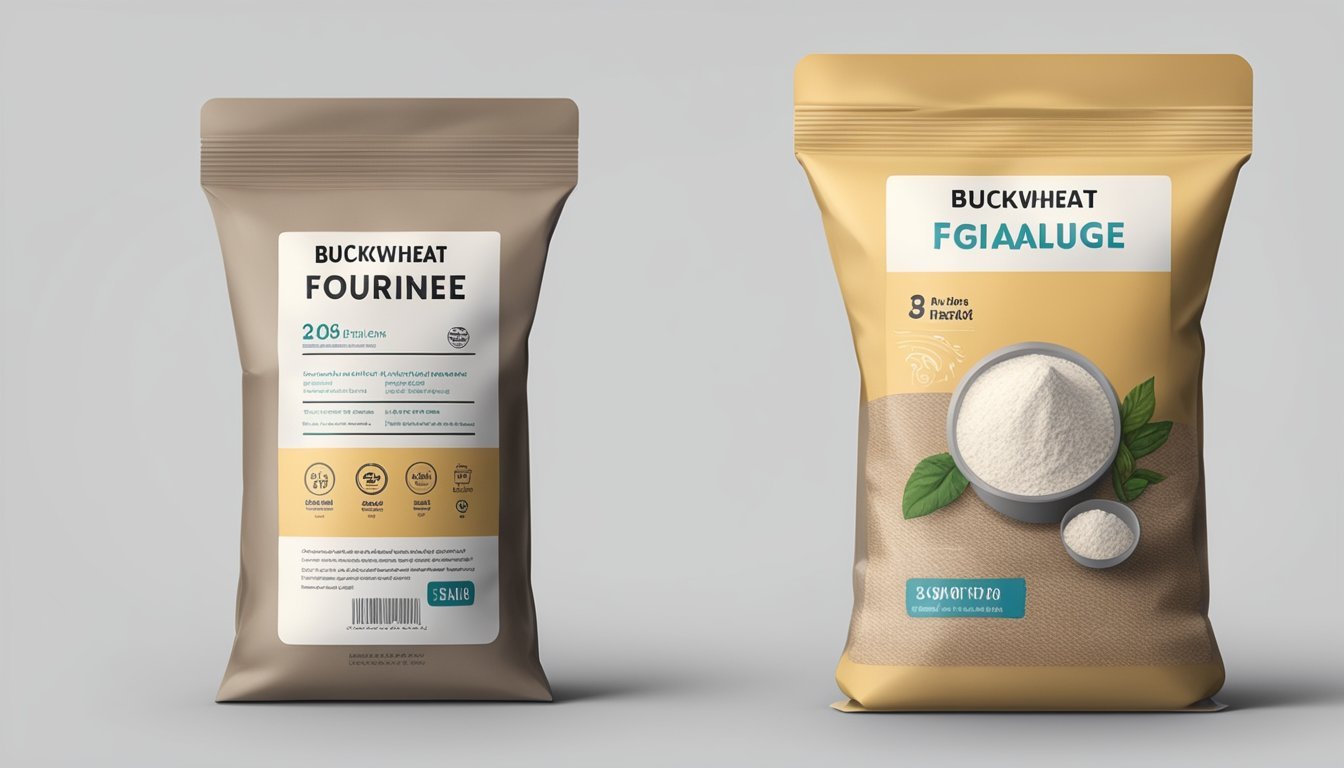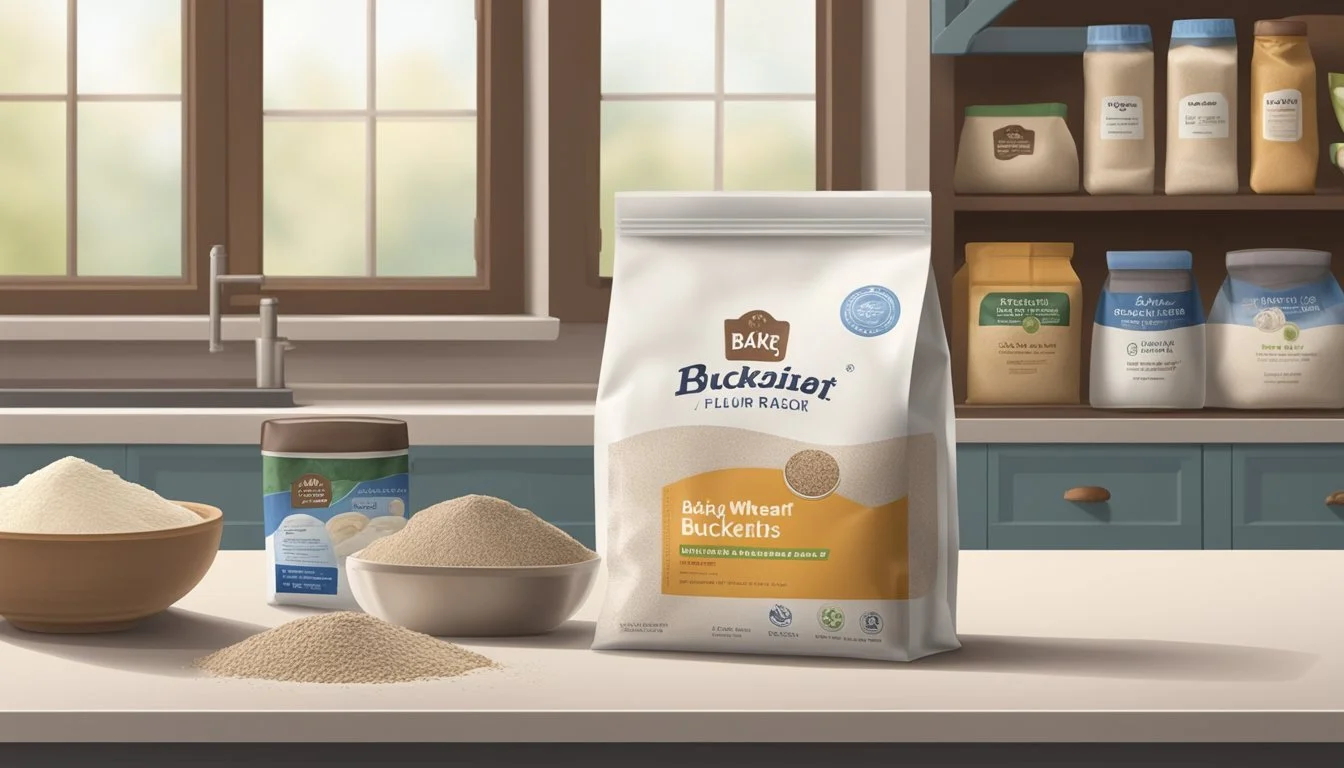How Long Does Buckwheat Flour Last?
Shelf Life and Storage Tips
Buckwheat flour is a highly nutritious, gluten-free alternative to traditional wheat flours. It's a popular choice among those with celiac disease or gluten sensitivities, as well as individuals seeking a more diverse nutritional profile in their cooking and baking. The flour is derived from the seeds of the buckwheat plant and imparts a rich, earthy flavor to recipes. It's often used in pancakes, noodles, and as a thickening agent in soups and stews.
Given its nutritional benefits and culinary versatility, understanding the shelf life of buckwheat flour is important for maintaining its quality and ensuring food safety. Typically, buckwheat flour has a shorter shelf life compared to refined wheat flours due to its higher oil content, which can lead to quicker rancidity. When stored properly, it can last for several months.
To maximize the shelf life of buckwheat flour, it should be stored in a cool, dry place, ideally in an airtight container to prevent moisture and pest intrusion. If the flour is kept in a refrigerator or freezer, its longevity can be extended beyond the general recommendation of 6-8 months. Signs that buckwheat flour has spoiled include an off, stale, or sour smell, clumps from moisture exposure, and any visible mold—indicating it's time to discard the product.
Understanding Buckwheat Flour
Buckwheat flour, derived from the seeds of the buckwheat plant, serves as a nutritious and gluten-free alternative to traditional wheat flours. This section highlights its origins, properties, and the health benefits it offers.
Origins and Properties of Buckwheat
Buckwheat, despite its misleading name, is not related to wheat but belongs to the Polygonaceae family, sharing a closer relationship with rhubarb. The plant produces buckwheat groats (how long do buckwheat groats last?), which are hulled seeds that can be further processed into buckwheat flour. Buckwheat flour is known for its distinctive flavor profile, ranging from bold and earthy to subtly bitter, and dark coloration that can often manifest as a rich, gray hue.
Gluten-Free: Unlike traditional wheat flour, buckwheat flour is naturally gluten-free, making it suitable for those with celiac disease or a wheat allergy.
Nutrients: It is high in fiber, protein, and essential minerals such as manganese and magnesium.
Fagopyrin: Buckwheats contain a unique compound called fagopyrin, though it is minimal in the flour form.
Health Benefits of Buckwheat Flour
Buckwheat flour offers a plethora of health benefits due to its rich nutrient profile. It is a complete protein source, containing all eight essential amino acids necessary for the human body. The high fiber content aids in digestion and offers cardiovascular benefits by improving cholesterol levels and blood pressure.
Complete Protein: Contains all eight amino acids, crucial for building and repairing tissues.
Dietary Fiber: High in dietary fiber, which supports digestive health and helps manage blood sugar levels.
Mineral-Rich: A good source of several minerals that support metabolic health.
This gluten-free flour is a healthful choice for various diets and delivers a nutrient-packed alternative to those with gluten sensitivities or looking to add more wholesome ingredients to their meals.
Shelf Life Basics
Buckwheat flour is a nutrient-rich, gluten-free alternative to traditional flours, but it requires proper storage to maintain its quality. The shelf life of buckwheat flour is a key concern for consumers aiming to enjoy its benefits while ensuring food safety.
Factors Affecting Shelf Life
Heat and Light: These elements can accelerate spoilage by promoting rancidity, especially in flours rich in oils like buckwheat. Storing buckwheat flour away from direct sunlight and heat sources helps in preserving its freshness.
Moisture and Air: Buckwheat flour's longevity is compromised when exposed to moisture and air. Moisture can lead to mold growth, while air exposure increases oxidation, causing the flour to turn rancid. Sealing the flour in a moisture-proof, airtight container minimizes these risks.
Storage Practices: Buckwheat flour can last approximately one month in the pantry. However, when placed in the freezer in an airtight container, its life extends up to six months to a year. Vacuum sealing can further prolong this period up to three years.
Expiration Date: Always check the expiration date on packaging as it provides a manufacturer's estimate for peak quality. Keep in mind that the flour can deteriorate before this date if not stored correctly.
Signs of Spoilage
Unpleasant Odor: A distinct, off-putting smell indicates that the buckwheat flour has gone rancid and should not be consumed.
Discoloration: Changes in color can be a telltale sign of spoilage. Buckwheat flour that has darkened or developed spots may be compromised.
Mold: Visible mold growth, which could result from moisture contamination, is a clear sign that the buckwheat flour is no longer suitable for use.
Note: Consuming spoiled buckwheat flour can lead to foodborne illness. It is crucial to rely on sensory cues to determine the flour's safety for consumption.
Storage Techniques for Buckwheat Flour
Proper storage techniques are essential for maintaining the freshness, nutrition, and flavor of buckwheat flour. By controlling temperature, moisture, and light exposure, one can significantly extend the shelf life of buckwheat flour.
Optimal Storage Conditions
To maximize the shelf life of buckwheat flour, it should be kept in a cool, dark place at room temperature. Ideally, temperatures should be steady and lower than room temperature whenever possible, but not as low as typical fridge temperatures. A pantry or cupboard away from heat sources or sunlight offers the appropriate conditions. An airtight container is crucial to prevent exposure to oxygen which can expedite spoilage.
Preventing Rancidity and Moisture
Buckwheat flour is prone to rancidity and damage from moisture. Utilizing freezer-safe containers or vacuum-sealed bags can protect the flour from these elements. In the freezer, buckwheat flour can last between six months to a year, enhancing its longevity significantly. When storing in the freezer, ensure the flour is in a moisture-proof and airtight environment to prevent freezer burn and absorption of odors.
Freezing Buckwheat Flour for Longevity
When it comes to extending the shelf life of buckwheat flour, freezing emerges as an effective method. Storing buckwheat flour in the freezer can substantially prolong its usable period, maintaining both its flavor and nutritional quality.
Best Storage Practices: To maximize buckwheat flour’s longevity through freezing, one should adhere to a few best practices. Below is a step-by-step guide to ensure optimal preservation:
Airtight Containers: Always use an airtight, moisture-proof container or heavy-duty freezer bags to ward off freezer burn and moisture ingress, which can spoil the flour.
Labeling: Mark the container with the date of storage. This helps keep track of how long the flour has been frozen.
Freezing Process: The method of freezing buckwheat flour is straightforward yet critical to its preservation:
Place the flour into the chosen airtight container.
Seal the container securely to prevent air from entering.
Label the container with the current date.
By following these steps, buckwheat flour’s integrity can be maintained for an additional six months to a year beyond its typical pantry shelf life.
Thawing Tip: Prior to usage, the frozen buckwheat flour should be thawed at room temperature. One should ensure it is completely thawed and not clumped together to guarantee consistent quality in culinary applications.
The freezer provides a haven for buckwheat flour, keeping it fresh and viable for extended periods, making it a practical option for those looking to store their flour long-term.
Utilization in Cooking and Baking
In the realm of cooking and baking, buckwheat flour is a versatile ingredient renowned for its gluten-free properties and distinctive flavor. It's used in numerous recipes, imparting a rich, earthy note to baked goods and acting as a thickening agent in sauces.
Buckwheat Flour in Gluten-Free Baking
Buckwheat flour is an excellent choice for gluten-free baking. It's naturally free from gluten, making it a safe option for those with celiac disease or gluten intolerance. Here's how one can effectively incorporate buckwheat flour into their gluten-free recipes:
Texture: While it offers a robust flavor, buckwheat flour can influence the texture of baked goods. It may create a denser and more delicate crumb than traditional flours.
Taste: Expect a nutty and slightly bitter taste, which complements other ingredients in recipes.
Blending: Frequently combined with other gluten-free flours to achieve the desired texture, it works well with rice flour (how long does rice flour last?) or almond flour for lighter baked goods.
Buckwheat flour lends itself particularly well to recipes such as pancakes and waffles, where its distinct taste is highly appreciated. It can be also used in muffins and cookies, delivering a moist and tender texture.
Recipes and Usage
The use of buckwheat flour extends beyond gluten-free alternatives, offering unique characteristics to various dishes:
Pancakes and Waffles: Provides a rich, warm flavor and pairs excellently with both sweet and savory toppings.
Bread: In bread making, it can add depth of flavor and a tender crumb, but usually needs to be mixed with other flours to help the dough rise.
Thickening Agent: As a thickening agent in sauces, it imparts a subtle flavor and smooth consistency.
When integrating buckwheat flour into recipes, one should ideally:
Begin with established recipes to understand how buckwheat flour behaves in baking.
Adjust liquid ratios as buckwheat flour may absorb moisture differently than wheat flour.
Experiment with proportions to achieve the preferred balance of taste and texture.
Labeling and Expiration Date
When purchasing buckwheat flour, consumers should carefully examine the packaging for labeling details that provide guidance on shelf life. Manufacturers typically print a best-by date or an expiration date on the bag or container, which indicates the timeframe within which the flour is expected to maintain its optimal quality. This date is not an absolute indication that the product will spoil immediately after, but rather a suggestion for peak freshness.
Here's a standard framework for buckwheat flour's labeled dates:
Best-By Date: Preferred timeframe for usage to ensure flavor and nutritional value.
Expiration Date: The recommended limit beyond which the flour might lose quality or become less safe to consume.
Guidelines for Buckwheat Flour Expiration:
Unopened Pantry: Typically, unopened buckwheat flour lasts up to the best-by date if stored in a cool, dry place.
Opened Pantry: Once opened, it should be used within one month to retain quality.
Freezer: To extend shelf life, store it in the freezer for up to two months.
Maintaining the flour in an airtight container can also aid in preserving its freshness, as it reduces exposure to air and moisture. Consumers are advised to heed these guidelines to help ensure they receive the most from their buckwheat flour regarding taste and dietary benefits. Usage past the labeled dates can result in a reduction in quality, so it is prudent to use the flour within the recommended period.
Alternative Flour Options
When looking for alternatives to buckwheat flour, it is crucial to understand how various flours compare in terms of texture, taste, and suitability for different recipes.
Comparing Buckwheat Flour to Other Types
Buckwheat flour, known for its earthy flavor, is distinct from common wheat flours and offers a gluten-free option for those with dietary restrictions. Wheat flours, like all-purpose or white flour, are often used as a standard for comparison due to their wide availability and neutral flavor profile. These flours provide structure to baked goods, thanks to gluten, which buckwheat lacks. Hence, for recipes that rely heavily on gluten, a direct substitution with buckwheat flour may not yield the desired results.
Exploring Buckwheat Flour Substitutes
When substituting buckwheat flour in recipes, several gluten-free flours can be considered:
Sorghum (how long does sorghum last?) Flour: A good substitute in cookies and pancakes, although it may produce crumbly cakes and bread.
Almond Flour: Use in a 1:1 ratio with buckwheat for pancakes, waffles, and cookies.
Coconut Flour: Quite absorbent and may require additional liquid in recipes to maintain moisture.
Oat Flour: Offers a mild, warm flavor and lends a soft texture to baked goods.
Teff Flour: (how long does teff flour last?) Rich in protein, fiber, and minerals, suitable for savory dishes and those requiring dense, hearty textures.
Gluten-Free Baking Flour Blends: Specifically formulated to resemble wheat flour characteristics in baking.
For those with gluten intolerance or celiac disease, it is essential to choose gluten-free options such as coconut flour or specially-designed gluten-free flour blends to replace wheat-based alternatives.
In savory dishes, the subtle flavor profiles of various flours become a consideration, with choices like oat or teff flour adding a nuanced taste. Because of their wheat-free properties, flours like buckwheat or its substitutes are popular in diets that exclude wheat and its derivatives, such as buckwheat groats.
Post-Purchase Processing
After purchasing buckwheat, consumers may opt for additional processing to extend the shelf life and enhance usage. Grinding, one of the primary methods, transforms buckwheat groats into flour. However, freshly ground buckwheat flour should be used promptly or stored correctly to maintain its freshness.
Sprouting is another technique applied to buckwheat groats. Sprouting can improve digestibility and nutritional value but is not directly related to the flour's longevity.
For those processing buckwheat at home, it's essential to consider the parts of the groat:
Bran: The outer layer, rich in fiber
Germ: The nutrient-packed core
Endosperm: The starchy component
Each part contributes to the flour’s nutritional profile, and proper processing helps to retain these benefits.
Storage Tips for Ground Buckwheat:
Refrigeration: Store in an airtight container; lasts up to 2 months.
Freezing: Ideal for long-term storage of up to 6-8 months.
Post-processing, keep the ground buckwheat away from heat and moisture to prevent spoilage. Users should note the flour's flavor and nutritional potency may wane over time, despite proper storage.








